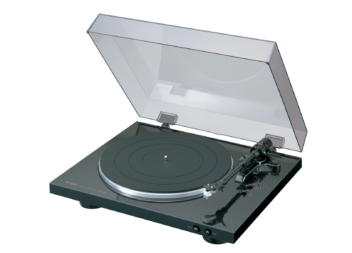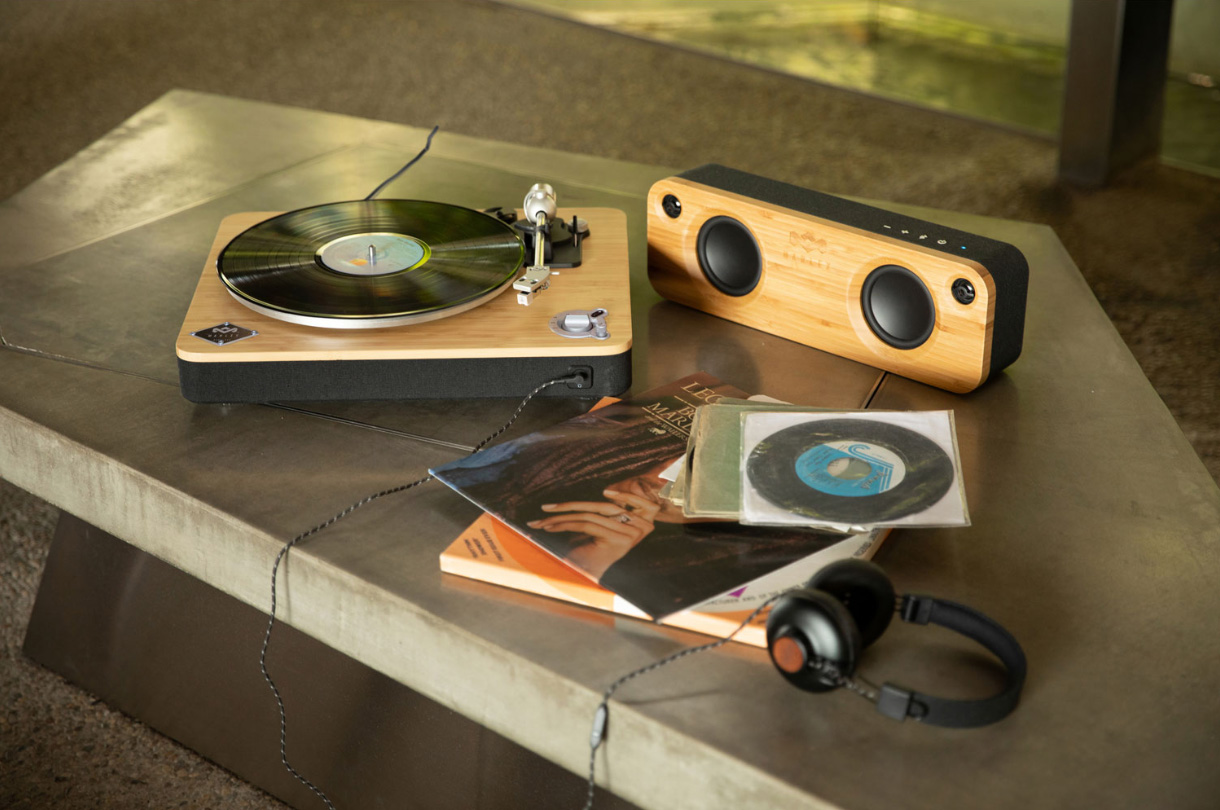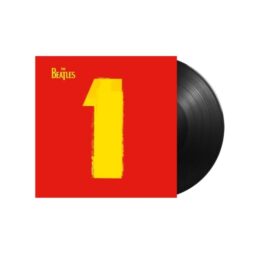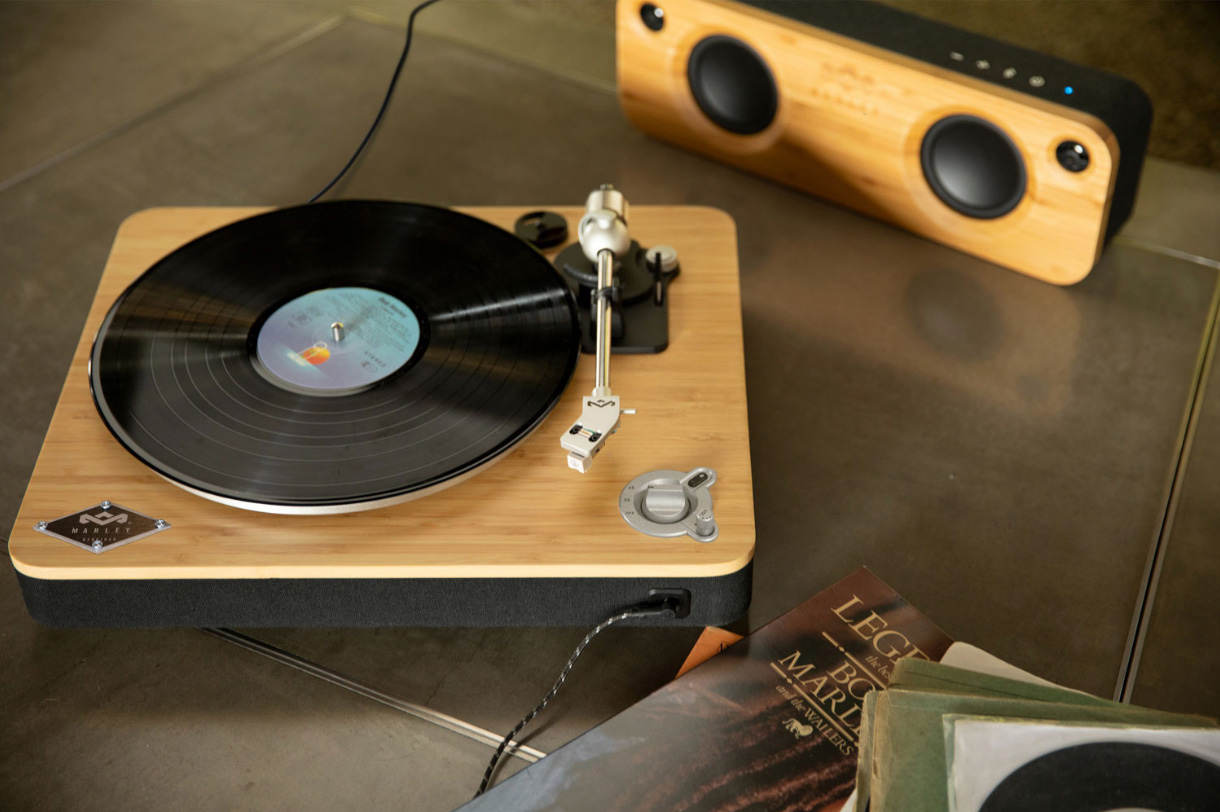
Vinyl records have become a symbol of musical nostalgia, offering a unique connection to the music of the past. Whether you’re a seasoned audiophile or a curious newcomer, learn why vinyl records are making a comeback and how to play records on a record player. This article will also answer frequently asked questions from how to clean and store vinyl records to where to buy them and how to understand their value.
The resurgence of vinyl records in the digital age
In the midst of all things digital, vinyl records are making an interesting comeback, capturing the hearts of both audiophiles and casual music lovers. Rooted in nostalgia, vinyl records take you back to a time when listening to music was an immersive experience, not just a background soundtrack. The tactile nature of handling a record, delicately setting the needle down, and being greeted by that distinctive analog warmth—it’s a sensory journey that’s hard to replicate. Each record is also a piece of history, a tangible link to an artist’s work, and a way to connect with the music on a deeper level.

How to play records on a record player
Playing records on a record player is an engaging experience that connects listeners to the music in a unique way. Here’s how you can get started:
1. Choose the right speed for your record: Vinyl records come in different sizes and speeds. Commonly, 12-inch records play at 33 1/3 RPM, and 7-inch singles play at 45 RPM. Ensure your record player is set to the correct speed for the record you’re playing.

2. Inspect the record for dust or scratches: Use a carbon fibre brush to gently remove any dust from the surface of the vinyl. Handle the record by its edges to prevent fingerprints.
3. Position the turntable’s tonearm: Carefully lift the tonearm, and align it over the record’s starting groove. Some turntables have a lever that aids in raising and lowering the tonearm smoothly.
4. Lower the stylus onto the record: Gently lower the stylus onto the outermost groove of the record. If your turntable has a cueing lever, you can use this to help lower the stylus with precision.
5. Adjust volume and tone: Once the record is playing, use your stereo system’s controls to adjust the volume and tone to your liking.
6. Enjoy the music! Sit back and enjoy the unique, warm sound that only vinyl can provide. Watch the record spin and immerse yourself in the music.
7. Turn off the turntable properly: When the record has finished playing, lift the tonearm, return it to its resting position, and turn off the turntable. Remember to store the record properly to preserve its condition.
Special tips to enhance your experience
- Manual vs. automatic turntables: Manual turntables require you to manually place the tonearm on the record, whereas automatic turntables can start and stop the record for you.
- Using a preamp: If your turntable doesn’t have a built-in preamp and your receiver doesn’t have a dedicated phono input, you may need an external preamp to properly amplify the signal.
- Playing small vinyl records: Small vinyl records, usually 7-inch singles, are played just like their 12-inch counterparts, often at 45 RPM instead of 33 1/3 RPM. Make sure to adjust the speed on your turntable accordingly.
Playing records on a record player is an art that can be both enjoyable and rewarding. By following these steps and understanding your equipment, you can experience music in a way that transcends digital listening.

Vinyl records FAQ
Whether you’re curious about the intricacies of how vinyl records are manufactured, wondering about their value, or concerned about maintenance and potential damages, this FAQ section addresses common inquiries that vinyl enthusiasts often have.
How are they made and how do they work
How are vinyl records made?
The process of making vinyl records involves several steps. Audio is first cut onto a master disc, then a stamper is created from this master. The stamper is used to press the vinyl material into the shape of the record, with the grooves corresponding to the audio tracks. It’s a careful process that combines technology with craftsmanship.
How do vinyl records work?
Vinyl records work by storing audio information in the form of grooves on their surface. A turntable‘s needle (stylus) traces these grooves, translating the vibrations into electrical signals that are then amplified and converted into sound through speakers.
Where to buy them and how much are they worth

Where to buy vinyl records?
You can buy vinyl records at specialized music stores, thrift shops, or online stores like Best Buy. Many contemporary artists also release their albums on vinyl, offering various options for both new and vintage collections.
Must-have vinyl records
Every vinyl collector has personal favourites, but some classic albums often make must-have lists. Titles by The Beatles, Pink Floyd, and Miles Davis, among others, are commonly recommended for a well-rounded collection.
Are vinyl records worth anything?
The value of vinyl records depends on factors such as rarity, condition, and demand. Some rare editions can fetch high prices, while common releases may have minimal value.

How to care for your vinyl records
How to clean vinyl records?
Cleaning vinyl records is a simple but delicate process. Use a carbon fibre brush specifically designed for vinyl to gently remove dust and debris. For a more thorough cleaning, use a solution of distilled water and a small amount of mild detergent, carefully wiping the record with a soft, lint-free cloth. Always wipe in the direction of the grooves to avoid potential damage.
How to store vinyl records?
Storing vinyl records properly ensures their longevity. Always store them vertically and avoid stacking them horizontally, as this can cause warping. Use shelves designed for vinyl or place them in upright boxes, away from direct sunlight and heat. Inner and outer sleeves can also provide additional protection.
Can you scratch a vinyl record?
Yes, vinyl records can be scratched if not handled with care. Always use gentle motions when handling and cleaning, and use proper equipment to minimize risks.
How to get scratches out of vinyl records?
Minor scratches might be reduced using a specialized cleaning solution, but deep scratches are usually permanent. Handle records with caution to prevent damage.
How to repair a warped vinyl record?
Warped records can sometimes be repaired by placing them between two flat, heavy objects and leaving them in a warm place for a short period. However, this method is not always successful, and professional assistance may be required.
Can you put vinyl records in the recycle bin?
Vinyl records are typically not recyclable through conventional means. It’s best to donate or sell them if they are no longer needed.

Immerse yourself in the rich world of vinyl
Vinyl records offer a tactile and auditory experience that digital formats can’t replicate. By understanding how to care for, store, and enjoy them, you can enjoy a connection to music that is both tangible and timeless. Whether you’re a seasoned collector or just starting, the enduring charm of vinyl records awaits.
This article was drafted using AI technology and then reviewed, fact-checked, and revised by a member of our editorial team.





Fantastic guide on vinyl records! Your detailed insights, especially on playing and caring for vinyl, are incredibly helpful for both new and seasoned collectors. The resurgence of vinyl in the digital age is fascinating, and your article beautifully captures the unique charm and tactile experience of vinyl. Great job on highlighting the importance of proper handling and storage to preserve these musical treasures. This piece is a true testament to the enduring allure of vinyl records!
Comments are closed.